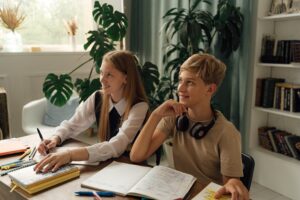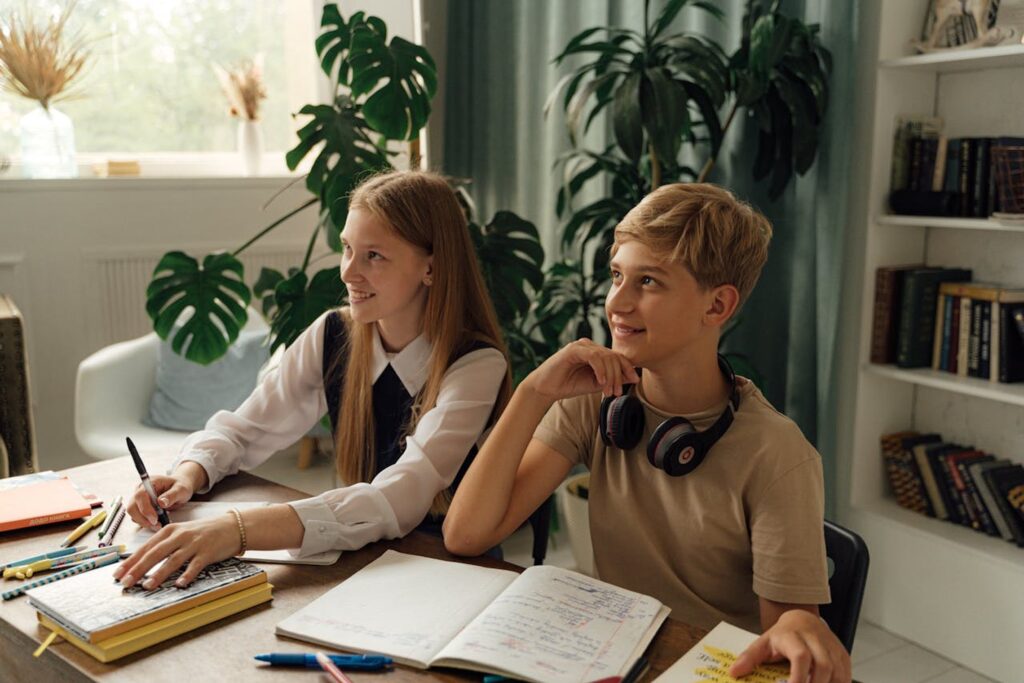Creativity of Lithuanian

Lithuanian 15-year-olds are distinguished for their excellent creative thinking skills. The results of the OECD PISA 2022 international survey of 15-year-olds published today show that Lithuania ranks 13-20 out of 64 countries. Lithuanian 15-year-olds outperformed 47 countries and underperformed 12 countries.
Statistically, the results of Lithuanian students are not significantly different from the OECD average (33 points) together with the results of Germany (33 points), Taiwan (33 points), Spain (33 points), the Czech Republic (33 points), France (32 points), the Netherlands (32 points), and Israel (32 points).
The survey assessed the creative thinking skills of fifteen-year-old students. It was tested how good students are at generating original ideas, generating diverse ideas, evaluating and improving the ideas proposed by others. The tasks for assessment of creative thinking skills encompassed the following four domains: written expression, visual expression, social problem solving, and scientific problem solving.
Lithuanian students achieved better results in completing the tasks involving written and visual expression and also they showed better performance in generating original ideas.
One in four Lithuanian students achieves top results
In Lithuania, 26% of students demonstrated the highest level of creative thinking skills – these students achieved the level 5 or 6 (the OECD average is 27%). At level 6, students are capable of generating original ideas, including unfamiliar contexts, using written and visual expression, identifying weaknesses in solutions to social or scientific problems and propose original solutions by combining visual elements in unexpected ways and conveying original interpretations.
A total of 80% of the country’s students achieved at least the level 3 in the area of creative thinking and this results is not significantly different from the OECD average (78%). At level 3, students can generate appropriate ideas for simple to moderately complex expressive and problem-solving tasks, and when solving familiar problems, they demonstrate the ability of generating original ideas or solutions. In 21 of the 64 countries surveyed, more than 1 in 2 students did not reach level 3.
Lithuanian students having a favourable economic, social and cultural status (ESCS) achieved higher creative thinking scores than their disadvantaged peers. In all countries, students with higher ESCS status achieve higher scores.
In Lithuania, the girls’ performance in creative thinking were on average 3.5 points higher than that of boys. In all PISA participating countries and territories, girls outperformed boys in the area of creative thinking.
78% of students find creative activities enjoyable
In Lithuania, 84% agreed with the statement that it is possible to be creative in almost any subject (the OECD average is 82%). The scores of these students are higher.
In general, the levels of imagination, open-mindedness and creative self-efficacy reported by students are relatively high. On average, in all OECD countries these attitudes of students are positively interrelated with the performance in the area of creative thinking. In Lithuania, 78% of students agreed with the statement that they find creative activities enjoyable.
In Lithuania, 69% of the respondents indicated that they are interested to know how things work, and 62% of students want to understand why people behave the way they do.
In Lithuania, 65% of 15-year-olds expect to attain higher education.
75% of students claim that teachers appreciate their creativity
In Lithuania, 65% of students stated that teachers give them enough time to find creative solutions to tasks (the OECD average is 63%). In all the countries participating in the survey, students claiming that their teachers value students’ creativity (there are 75% of such students in Lithuania) were more likely to show higher scores in creative thinking.
In Lithuania, 96% (OECD – around 90%) of students learn in schools where managers believe that one can be creative almost in all subjects, or that creativity can be developed.
Lithuanian students have the opportunity to attend art (73%), drama (54%), creative writing (33%) or computer programming (58%) classes once a week or more often in their own school.
Impact of the use of digital resources is diverse
A total of 61% of Lithuanian students use digital resources for learning purposes for one hour or longer while being in school, whereas 57% of students use these resources outside school (the OECD averages: 55% and 50%). Similarly to mathematics literacy, the use of digital resources has a minor positive impact on students’ performance in creative thinking but only up to a certain threshold.
About the survey
The results of the OECD PISA 2022 survey for reading, mathematics and scientific literacy were published in December last year. They showed that the results of Lithuanian fifteen-year-olds in reading skills, mathematics and scientific literacy were similar to those a few years ago, conform to the OECD average and are significantly higher than the average of all the countries participating in the survey. In total, 81 countries participated in the survey.
There were 64 participants, including Lithuania, in the area of creative thinking of this survey.

